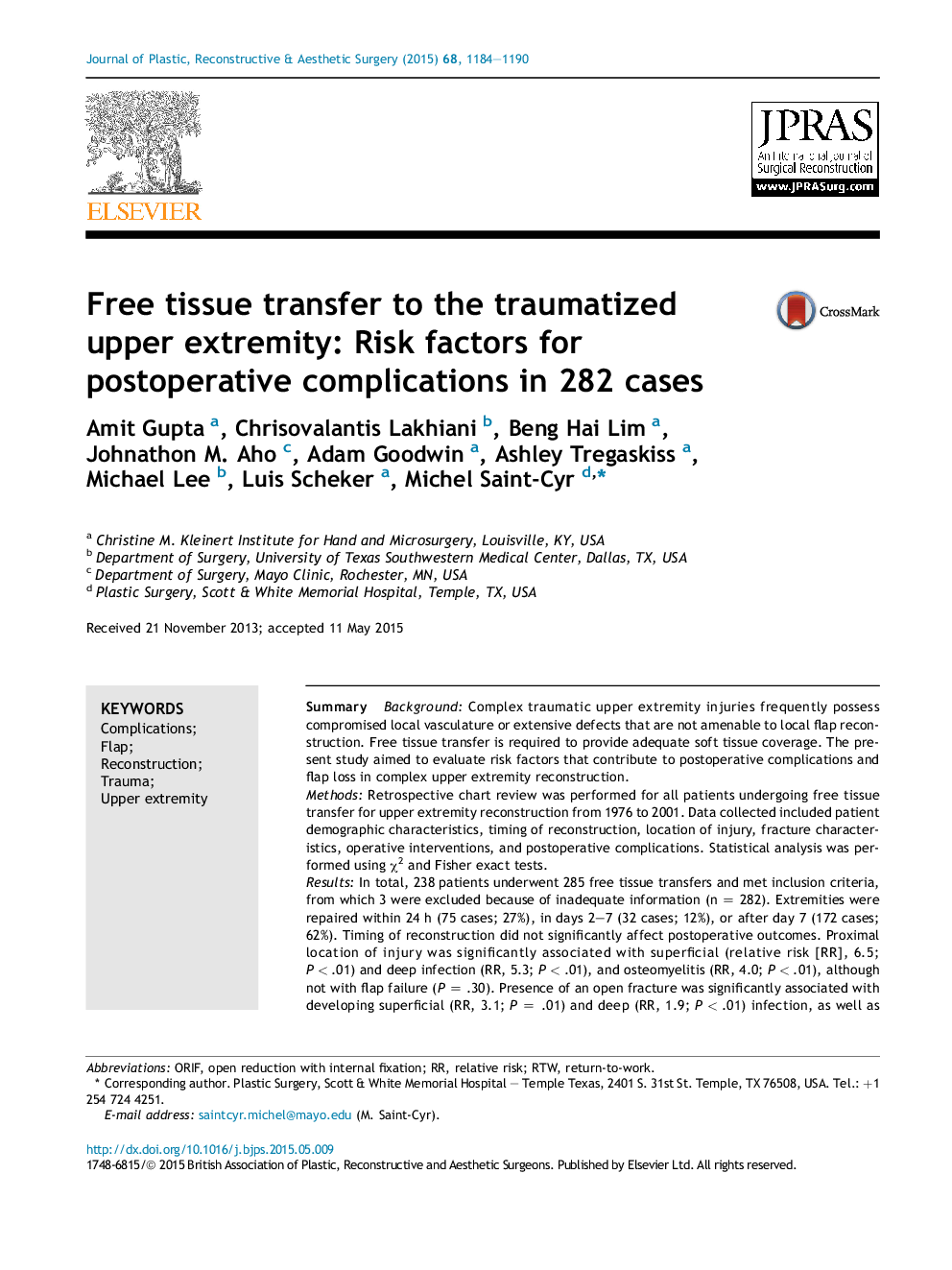| Article ID | Journal | Published Year | Pages | File Type |
|---|---|---|---|---|
| 4117916 | Journal of Plastic, Reconstructive & Aesthetic Surgery | 2015 | 7 Pages |
SummaryBackgroundComplex traumatic upper extremity injuries frequently possess compromised local vasculature or extensive defects that are not amenable to local flap reconstruction. Free tissue transfer is required to provide adequate soft tissue coverage. The present study aimed to evaluate risk factors that contribute to postoperative complications and flap loss in complex upper extremity reconstruction.MethodsRetrospective chart review was performed for all patients undergoing free tissue transfer for upper extremity reconstruction from 1976 to 2001. Data collected included patient demographic characteristics, timing of reconstruction, location of injury, fracture characteristics, operative interventions, and postoperative complications. Statistical analysis was performed using χ2 and Fisher exact tests.ResultsIn total, 238 patients underwent 285 free tissue transfers and met inclusion criteria, from which 3 were excluded because of inadequate information (n = 282). Extremities were repaired within 24 h (75 cases; 27%), in days 2–7 (32 cases; 12%), or after day 7 (172 cases; 62%). Timing of reconstruction did not significantly affect postoperative outcomes. Proximal location of injury was significantly associated with superficial (relative risk [RR], 6.5; P < .01) and deep infection (RR, 5.3; P < .01), and osteomyelitis (RR, 4.0; P < .01), although not with flap failure (P = .30). Presence of an open fracture was significantly associated with developing superficial (RR, 3.1; P = .01) and deep (RR, 1.9; P < .01) infection, as well as osteomyelitis (RR, 1.6; P < .01). Having a closed fracture did not negatively influence postoperative outcomes.ConclusionsThis study supports the safety of early free tissue transfer for reconstruction of traumatized upper extremities. Injuries proximal to the elbow and open fracture were associated with a significantly higher infection rate. Gustilo grade IIIC fractures, need for interpositional vein grafts, and anastomotic revision at index operation resulted in significantly higher risk of flap loss, whereas the presence of fracture, fracture fixation, and injury location were not predictors of flap failure.
